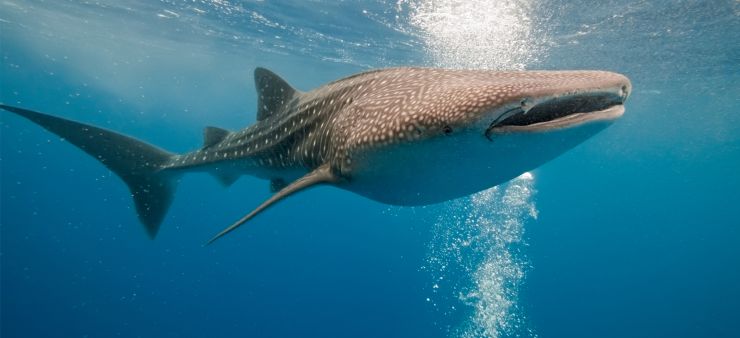Whale Sharks - Did you know?
Today is International Whale Shark Day, so let's take a minute to appreciate and learn about these amazing creatures.

- Known as - Whale Shark
- Scientific Name - Rhincodon typus
- Type - Fish
- Size - Up to 12 metres long.
- Weight - Average: 12 tones (that’s 24,000 pounds or 11,000 kilos!)
- Average Life Span - 70 years
- Diet - Carnivore
- Feeding habits - Filter feeder
- Habitat/Ecosystem - Coastal to open ocean; aggregate around specific reefs
- Conservation Status - Endangered
Reaching the size of a school bus, Whale Sharks are the largest fish in our oceans and are in no way related to whales. Although they are sharks, they are very docile and pose no real threat to humans. They are known as the oceans gentle giants.
They have a unique pattern, and much like a human fingerprint, each Whale Shark’s skin is completely unique. This allows researchers to run visual analytics to correctly identify and track them individually. The Whale Shark’s flattened head sports a blunt snout above its mouth with short barbels protruding from its nostrils. Its back and sides are grey to brown with white spots among pale vertical and horizontal stripes, and its belly is white. Its two dorsal fins are set rearward on its body, which ends in a large dual-lobed caudal fin or tail.
They aren’t the fastest swimmers, reaching speeds no higher than 5 kilometers per hour. They swim by moving their bodies from side to side, unlike other sharks like the Great White, who just use their tails to swim. Whale Sharks can dive up to 1,000 meters. However, they prefer to roam shallow seas with 50-meter depth.
Even though Whale Sharks do have about 3,000 tiny teeth (less than 6mm long), they don't use those teeth to eat. They are filter feeders, which means that in order to eat, they just open out their jaws like a vaccum and suck the water into their mouth. This sieves plankton through their gills for much of their nourishment. The gills act like strainers, filtering out the water while keeping the solid organisms smaller than about 2 centimeters in diameter. Researchers believe that when larger bits of ocean life get stuck in their gills, the Whale Shark coughs to clear these filters. They also sieve krill, squid and other small fish. This method allows the Whale Shark to pull in a lot more plankton than the other filter feeder, the Basking Shark.
To learn more about this amazing whale sharks, click here.

